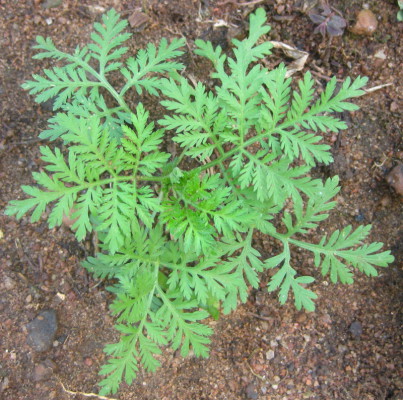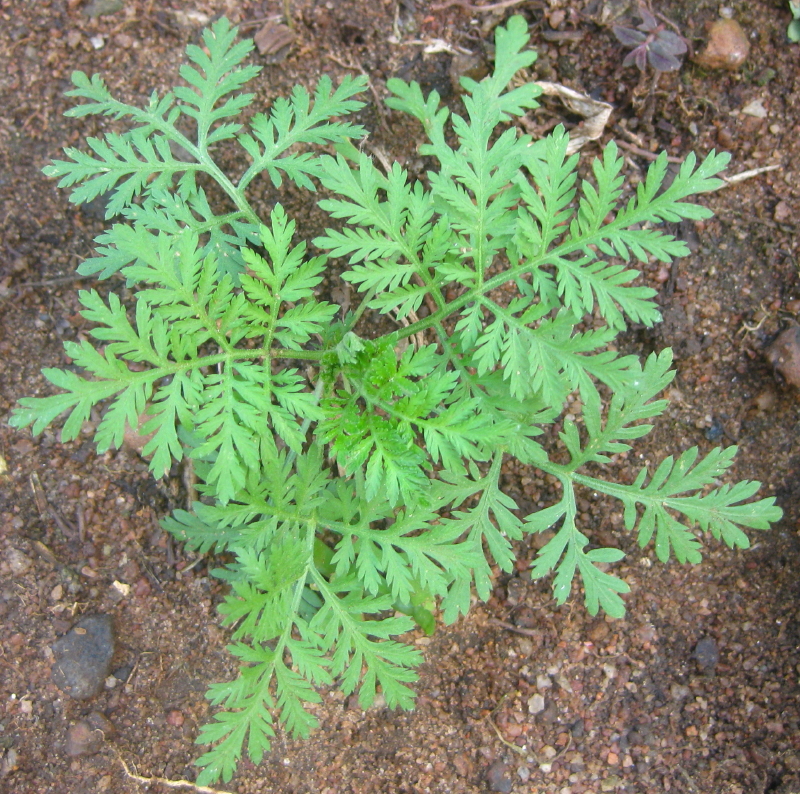
by Almuth Ernsting
Synthetic biology is being heavily promoted and funded as a way to produce large quantities of cheap industrial products, including biofuels. But so far affordable, large-scale manufacture with synbio organisms has proven elusive. Synbio start-up companies that set out to produce high volumes of low-cost biofuels have switched to low volumes of expensive chemicals, cosmetics and food additives instead. Many are still struggling to stay afloat.
Sanofi’s synthetic artemisinin, an anti-malaria drug, has been the latest casualty amongst commercial synbio ventures, and is perhaps the most stunning one:
According to an article just published in Nature, Sanofi failed to produce any synthetic artemisinin in 2015 and they are selling their artemisinin manufacturing plant in Gasserio, Italy. Jay Keasling first developed the GE yeast strain used to make artemisinin, and in the article explains that if the price of natural artemisinin, derived from sweet wormwood, “is already very low and there’s a bumper crop, there’s no reason to fire up a fermenter”. By a low price, he means less than $350 per kg. This will come as a relief to the 100,000 farmers in Asia and Africa whose livelihoods depend on sweet wormwood.
If Sanofi were making biofuels rather than artemisinin, they would cost at least $350,000 per tonne, or over $41,000 per barrel. This comparison is only partly valid because Sanofi’s genetically engineered microorganisms produce artemisinic acid, which needs to be chemically converted to artemisinin, accounting for part of the overall cost. This additional cost would not be incurred in the production of biofuels.
But the comparison is not entirely far-fetched either: Sanofi’s artemisinin platform was developed by Amyris, originally a biofuel company that was founded in 2003. Jay Keasling was a co-founder of Amyris and he is also the CEO of the US Department of Energy’s Joint BioEnergy Institute, founded in 2007. In 2006, Keasling and others announced in Nature that Amyris had succeeded in significantly altering the metabolic pathways of baker’s yeast so that it would produce artemisinic acid. The work had been supported by a $53.3 million grant from the Bill & Melinda Gates Foundation. Amyris handed the technology free of charge to the French pharmaceutical company Sanofi in 2008, who started commercial production of synthetic artemisinin in April 2013. Amyris meantime morphed into a biofuel company, or at least branded itself as one, even though it expected from the start to be reliant on the sale of higher-price specialist chemicals to break even.
Amyris’s underlying biotechnology has remained the same as that used by Sanofi to make synthetic artemisinin. Artemisinic acid belongs to a group of chemicals called isoprenoids or terpenoids. These are carbon molecules only found naturally in plants. Isoprenoids are not just of interest for pharmaceuticals. They have been described as “ideal candidates for advanced biofuels that may act as ‘drop-in’ replacements for gasoline, diesel, and jet fuel”.
Amyris chose to focus on a particular isoprenoid called farnesene. Its genetically engineered yeast is capable of converting sugar (from Brazilian sugar cane) to farnesene. The gene that allows yeasts to turn sugars into farnesene was taken from sweet wormwood, i.e. from the plant from that the malaria drug artemisinin is made. In other words, Amyris has merely had to tweak the GE yeast strain developed for artemisinin in order to produce biofuels and speciality chemicals instead.
In 2009, Amyris obtained a $22 million grant from the US Department of Energy. This presumably had nothing to do with the fact that the company’s co-founder Keasling works for the department.
In purely technical terms, Amyris’s farnesene fuels have been a success: Car manufacturers and aviation companies have tested their jet fuel and their synthetic diesel and found that it complied with and even exceeded technical and pollution standards. Commercially, the biofuels that Amyris has produced have been anything but successful.
In 2011, the company entered into contracts to supply its sugar-cane derived diesel to the transit authorities for use in buses in Rio de Janeiro and Sao Paulo. At an exorbitant cost of $7.80 per litre, this required a significant public subsidy. According to an investigative article by the business journal Fast Company, even this was well below the cost of manufacture. Thus, the more farnesene-based diesel Amyris produced and sold, the greater the company’s losses were. According to the same article, Amyris’s directors had been hoping from the outset that their company could sell farnesene at its real production cost of $20 – $50 per litre, or $3,180 to $7,949 per barrel, which would mean selling it for use in expensive, niche products.
Clearly, the recent fall in oil prices cannot be blamed for Amyris’s troubles. The company has had to abandon a 100 million gallon a year refinery which it had started to build but never fully commissioned. And its stock price has plummeted from a high of over $37 per share in 2011 to a mere $1.50. Amyris’s sales are largely confined to personal care products now.
In November 2015, the company announced to investors that it had managed to improve its GE yeast strains and reduce production costs down to $2 per litre in 2015, and even $1.75 in September of that year. This would have implied a major breakthrough. Judging by Amyris’s share prices though, investors have not been convinced. If Amyris had really made a commercial breakthrough then it is hard to understand why its sales almost halved during the first nine month of 2015 compared to the same period of the previous year, or why its losses from production have risen.
Amyris is not the only synbio company that has attracted major public and private (and in the case of artemisinin philanthropic) funding based on hyped up claims. Solazyme, who grow genetically engineered algae on sugar cane, have fared no better, as a recent report by Biofuelwatch shows. Amyris (and for that matter Sanofi’s artemisinin project) is also not Jay Keasling’s only failed venture.
Back in 2005, Keasling co-founded another synbio company, LS9, which used genetically engineered E.coli to convert sugar to fuels. LS9, together with partners HCL CleanTech (now called Viridia), were granted $9 million by the US Department of Energy to try to commercialise this process. Backed by venture capitalists, they invested $81 million in a demonstration plant in Florida. By 2014, LS9 had failed and was forced to sell its equipment and technology to a larger firm, which has no plans to use them for biofuel production. Keasling admitted to MIT Technology Review: “[Getting] the yields up to make them economically viable is very hard to do”, adding: “We need to be as good at engineering biology as we are at engineering microelectronics”.
Keasling has been one of the most prominent believers that synthetic biology can replicate the successes of electronics, treating genes in living organisms as if they were transistors. In 2009, he told the New Yorker:
“The entire electronics industry is based on a plug-and-play mentality. Get a transistor, plug it in, and off you go. What works in one cell phone or laptop should work in another. That is true for almost everything we build: when you go to Home Depot, you don’t think about the thread size on the bolts you buy, because they’re all made to the same standard. Why shouldn’t we use biological parts in the same way?”
His commercial ventures are failing precisely because living organisms are not electronics parts and because they don’t perform as predicted by computer models. As the author of the Fast Company article about Amyris concluded:
“When synthetic biologists announce they will treat microbes like tiny factories, investors and markets may be listening, but the microbes are not. Biology is not computing or engineering—at least not yet. Yeast has already been programmed by evolution. Inserting genetic instructions or working around ones already inside will be an uncertain business until scientists understand exactly how the organism functions. And that may take decades—if ever.”
Synthetic biologists simply cannot accurately predict how their GE microbes will behave and perform in an industrial environment. In a similar vein, they can’t credibly predict how they will behave and interact in complex ecosystems when they escape, either.
